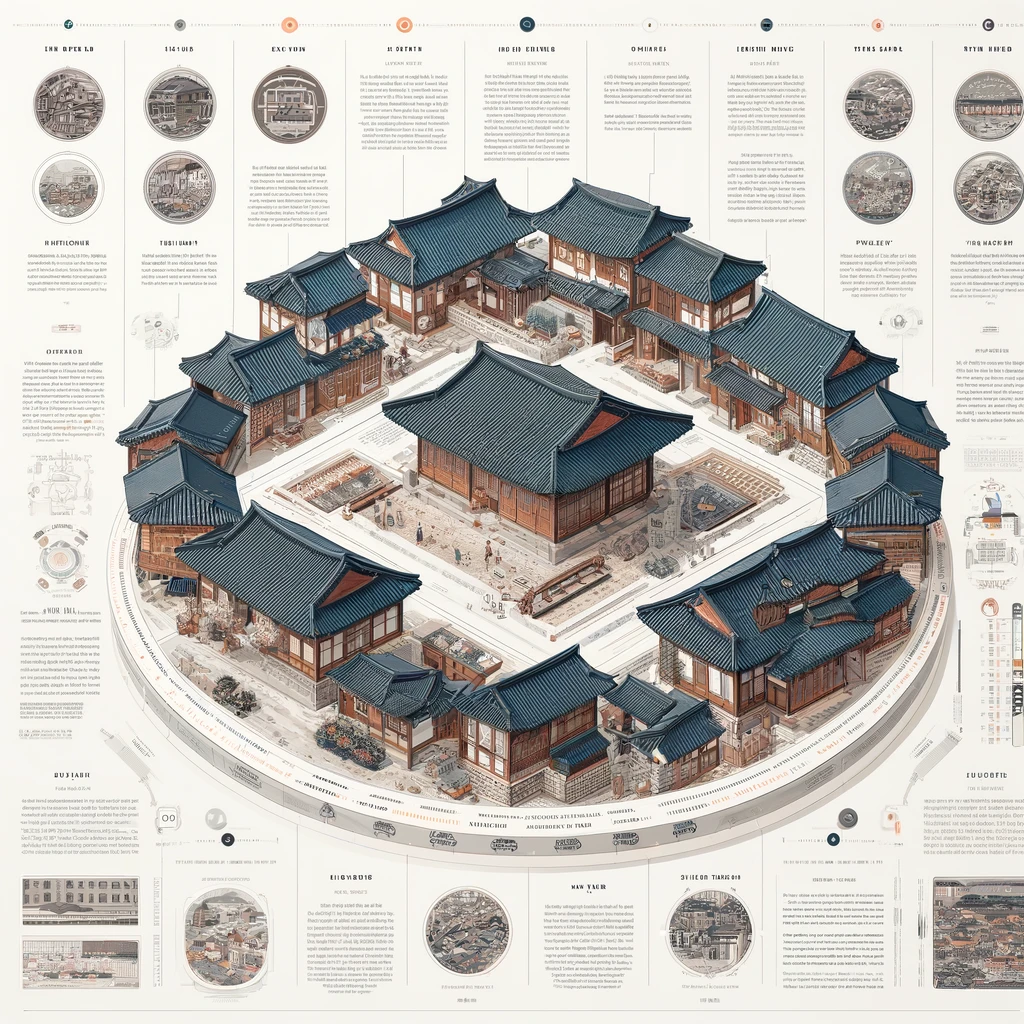목차
Historic Homes of Seoul: A Visit to Bukchon Hanok Village
Introduction
In the heart of Seoul, amidst the modern skyscrapers and bustling city life, lies Bukchon Hanok Village—a serene enclave preserving the architectural heritage and traditional lifestyle of Korea’s Joseon Dynasty. This blog post offers a detailed exploration of Bukchon Hanok Village, highlighting its historical significance, architectural beauty, and cultural activities that offer a window into Seoul’s storied past.

Historical Context of Bukchon Hanok Village
Bukchon Hanok Village, which means “Northern Village,” is situated between Gyeongbokgung Palace, Changdeokgung Palace, and Jongmyo Shrine, areas historically designated for nobles and high-ranking officials during the Joseon Dynasty (1392-1910). The village is composed of hundreds of hanoks (traditional Korean houses) that date back to the Joseon era, making it a living museum of traditional Korean architecture and culture.
Architectural Significance of Hanoks
Hanoks are distinguished by their unique design and construction, which reflect the Korean philosophy of living in harmony with nature. Key architectural features include: Giwa Roofs: The elegant, curved lines of the tiled roofs, designed to harmonize with the surrounding landscape.
Daecheong Maru: A wooden front porch used for sitting and relaxing, which helps regulate indoor temperatures during summer and winter.
On-dol Flooring: A traditional Korean underfloor heating system that uses heat from wood smoke to warm the stone floors, providing comfort during harsh winters.
Natural Materials: Hanoks are constructed using natural materials such as wood, soil, rock, and straw, which are environmentally friendly and complement the aesthetic beauty of the structures.
Preservation and Restoration Efforts
In the 2000s, the Seoul Metropolitan Government initiated efforts to preserve and restore Bukchon Hanok Village. These efforts were aimed at maintaining the architectural integrity of the hanoks while updating them with modern conveniences. The restoration projects also included training programs for artisans specializing in traditional construction techniques, ensuring that the knowledge and skills required to maintain these historic structures are preserved.
Experiencing Bukchon Hanok Village
Visitors to Bukchon Hanok Village can immerse themselves in a variety of cultural experiences and activities:
Guided Tours: Walking tours provide insights into the history and architecture of the hanoks, explaining the cultural significance and historical context of the village.
Cultural Workshops: Visitors can participate in traditional Korean arts and crafts workshops, such as calligraphy, hanbok (traditional clothing) wearing, and tea ceremony classes, offering a hands-on experience of Korean traditions.
Photography: The picturesque alleys and traditional aesthetics of the hanoks provide perfect opportunities for photography enthusiasts to capture the essence of traditional Korean culture.
Traditional Guesthouses: Some hanoks operate as guesthouses, offering visitors the unique experience of staying in a traditional Korean home. These guesthouses often include traditional Korean meals and the chance to live like the locals.
Art Galleries and Museums: Several hanoks have been converted into art galleries and museums, showcasing local art, crafts, and historical artifacts, further enriching the cultural experience of visitors.
Community and Cultural Events
Bukchon Hanok Village is not just a tourist attraction but a vibrant community. Throughout the year, the village hosts various cultural events and festivals that celebrate traditional Korean holidays and customs. These events provide a lively and authentic glimpse into the cultural heritage of Korea.
Challenges and the Future
While Bukchon Hanok Village has successfully attracted tourists and promoted Korean culture, the influx of visitors poses challenges to residents and the preservation of tranquility and authenticity. Efforts are ongoing to balance tourism with community needs and to ensure that the village remains a living part of Seoul’s cultural landscape rather than a static museum.
Conclusion
Bukchon Hanok Village is a testament to Seoul’s commitment to preserving its cultural heritage amidst rapid urbanization. It offers a unique blend of historical insight, architectural beauty, and cultural experiences, making it a must-visit for anyone interested in the rich tapestry of Korean history and culture. As Seoul continues to evolve, Bukchon Hanok Village remains a cherished link to the past, offering a peaceful retreat from the modern world and a reminder of the enduring values and aesthetics of traditional Korean life.
Go Blog Home
